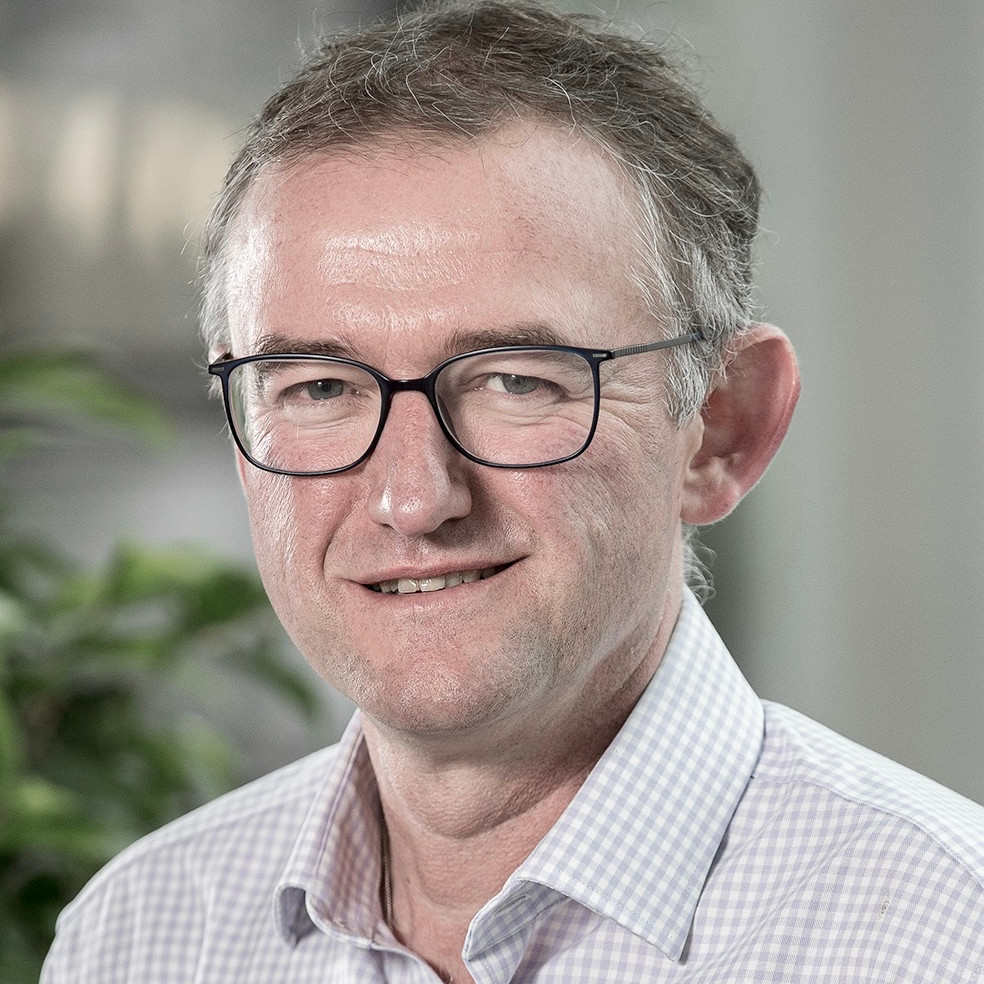About This Project
Sphagnum mosses are the most significant genus in the world for carbon sequestration as they form peat, which stores more carbon per hectare than tropical rainforest. Critically, Sphagnum also creates a niche for methanotrophic bacteria, which remove the methane naturally emitted from peatlands. By optimising the mosses we reintroduce during peatland restoration through trait selection in Sphagnum, we can enhance carbon sequestration and reduce natural methane flux.
Ask the Scientists
Join The DiscussionWhat is the context of this research?
As an ecosystem engineer that creates peat, Sphagnum has locked up gigatonnes of carbon. However, Sphagnum has disappeared from many peatlands due to human influence. Millions of dollars are spent on reintroduction programmes, but planting typically avoids pools, which are methane hotspots, as although some Sphagnum species can grow aquatically, most can’t. While crop species have been optimised through breeding, bryophytes like Sphagnum have not due to their limited commercial application. Given the known variability in traits between and within species, we suggest that trait selection in terms of a) suitability in an aquatic environment, b) rate of carbon uptake, and c) methane removal, will produce an optimised greenhouse gas removal tool that sequesters carbon and destroys methane.
What is the significance of this project?
The Royal Society estimates global GGR potential of peatland restoration at 0.4–20 Gt CO2 yr-1, however increased methane emissions from wetter peat constrain these values. This constraint can be mitigated by the optimised reintroduction of Sphagnum. Our preliminary work showed that floating Sphagnum colonies can reduce methane flux from peat pools by 39%. Globally, northern peatlands cause 5–10% of total methane emissions. On blanket bogs, the areas where pools form emit 96% of methane flux from only 9% of land area. We propose to target these hotspots of methane production, thus achieving cost-effective methane removal. An additional 4.5% Sphagnum cover on peat bogs (only half of the wetter areas and therefore a plausible target) could lower global methane emissions by 1.5 to 2.9%.
What are the goals of the project?
Our research goal is to build a novel bubble column test rig that will allow us to introduce methane below floating mats of Sphagnum and assess rates of removal compared to control conditions. We will test all aquatic species of Sphagnum and assess their performance at carbon uptake and methane removal. There is known variation in productivity, the density of community structure and branching on individual plants, which we expect will control the rate of methane trapping and removal. For the best performing species, we will characterise within-species variation in traits to identify an optimal strain for methane removal in different habitat niches. These strains can then be scaled up commercially via cloning and micropropagation and used in ongoing reintroduction programmes.
Budget
Our main costs are a research technician and student researcher two days a week for nine months. This is required to run the experiments to deliver the project goals. We have kept staff costs low by using the ‘Jobs for students’ scheme through the university. JR and ME are donating their time in-kind while CF is costed at four days total to manage the staff. We have a quote for fabrication of the novel bubble reactors from an engineering firm we have used before. Methane gas, septa and syringes are required to introduce methane into the system and gas chromatography analysis is required to quantify methane removal rates. We require two days of field sampling to collect peat pool water to fill the bubble columns for each set of experiments. The vast majority of costs including academic time, overheads and access to laboratory space and equipment are being met by our university, for example we have just purchased a new gas chromatograph for ~$150k which will be used on the project.
 Project Timeline
Project Timeline
We will build and test the novel bubble column for methane removal experiments in the first 3 months then trial different Sphagnum species over the next 6 months before writing up. This is enough time to develop a proof of concept and demonstrate potential removal rates in vitro before seeking further funding for field trials of the optimal species and strains. Design of the bubble columns has already begun to limit risk of delays.
Jan 06, 2025
Project start; bubble column fabrication begins
Feb 06, 2025
Prototype bubble column completed and tested
Mar 06, 2025
All bubble columns delivered, tested and lighting rig installed
Mar 20, 2025
Field collection of peat pool water; delivery of bought in sphagnum material
Jun 20, 2025
Round 1 experiments on different sphagnum species complete
Meet the Team
Team Bio
JR and ME published a list of research needs for the international peat community (Ritson, J. P. et al. Sci. Total Environ. 759, 2021) and a review of peatland microbial science which shaped the goals and methodology of the proposal (Robinson, C. H. et al. Mires Peat 29, 1–36 2023). JR is focussed on biogeochemistry, ME on hydrology whilst CF joins the team as an expert in Sphagnum ecology and DR as a microbial ecologist.
Jonathan Ritson
Dr Jonathan Ritson is a research fellow at the University of Manchester where he works on greenhouse gas removals through novel peatland restoration methods as well as developing funding models for increasing biodiversity and carbon sequestration in diverse landscapes. His focus on the project is the biogeochemistry of peatland systems and he has published widely on the topics of peatland carbon fluxes, monitoring techniques, peatland water quality and historical changes in biodiversity. Jonathan holds a PhD in environmental engineering from Imperial College London and previously worked for Green Alliance, the oldest environmental think tank in the UK. Jonathan’s work on developing funding models for peatland restoration schemes, both in the UK and internationally, will help rapidly scale up the project results once methane removal rates have been quantified. He has an existing network of commercial interests working in this field who have sought his advice to optimise carbon balances of projects, develop funding models and thus realise revenue streams.
Jonathan has a strong track record in translating research findings into actionable advice to research users, as well as communicating findings to third sector organisations and the public. Jonathan has recently received consultancy awards of >£200k from the WWF, Falklands Conservation and The Wildlife Trusts to advise on carbon offsetting and peatland restoration. These roles led to an invitation to brief the UK government Cabinet Office and invited talks to industry, academia and third-sector organisations and influenced the investment strategy of the charities advised. Jonathan holds a qualification in project management and will be responsible for risk management and meeting deadlines.
Chris Field
Dr Chris Field is a researcher of plant and soil responses to nitrogen deposition and environmental change, based in the Department of Natural Sciences, Manchester Metropolitan University. Chris collaborates with NGOs and UK and EU Government agencies by providing underpinning evidence on the risks to biodiversity from nitrogen deposition, and the development of new practices for the restoration and management of degraded peatlands. His research has been funded by Natural England, Interreg NW Europe, UK research councils, Innovate UK and Horizon Europe, receiving over £2 million in grant income. Chris sits on the steering committee of the Great Manchester Wetlands Partnership, the North West sub-group of the UK Government’s Lowland Agricultural Peat Task Force and led a work package on the Interreg funded ‘Care-Peat’ project with responsibility for the establishment of a monitoring programme including GHG emissions and the development of a UK ‘Carbon Farm’ with project partners that seeks to inform how alternative land management can mitigate GHG emissions. Chris is also lead author of the chapter on mires, bogs and fens in the United Nations Economic Commission for Europe review of critical loads for nutrient nitrogen.
Martin Evans
Martin Evans is Professor of Geomorphology at the University of Manchester. He studied at Oxford and the University of British Columbia and has worked at the universities of Durham and latterly Manchester for over 25 years researching the erosion and restoration of peatlands. His work investigates the physical and biogeochemical processes that underpin the functioning of degraded and restored systems and more recently has focussed on the ways in which peatland restoration can be optimised to deliver a range of ecosystem services. This has included UK research council projects on the microbial basis of peatland resilience and on optimisation of restoration to deliver flood mitigation to downstream communities. Currently he is leading the Manchester component of a £4.5m demonstrator project assessing the optimisation of upland peat restoration to maximise carbon sequestration.
Martin is a fellow of the British Society for Geomorphology of the Royal Geographical Society and is the author of over 100 publications on peatland erosion, restoration, function and ecosystem services. He works closely with a range of policy and practitioner partners on peatland research including the IUCN peatland programme, Moors for the Future, Yorkshire Peat Partnership, The Environment Agency, Natural England and the National Trust. This close connection with restoration practice and policy has allowed work at the scale necessary to implement optimised peatland restoration in ways that deliver tangible societal benefits. These connections mean that there is a clear path to widespread adoption of the approaches we aim to explore in the Bezos Earth Fund project if it is supported. Martin is also an editor of Geography Review magazine which is a periodical aimed at high school students studying geography in their final two years. This provides an opportunity for wider public engagement around the proposed sphagnum-methane project as the carbon cycle is a key part of their studies.
Damian Rivett
Dr Damian Rivett is a microbiome ecologist whose research interests lie in the field of microbiome interactions. Trained as a biochemist, ecologist, and microbiologist he has broad interests in how microbial species interact and persist in highly diverse communities. To generate answers to fundamental questions, he combines experimental microbiology with microbiome sequencing to go beyond simply surveying the diversity, and understand functional processes underpinning the community dynamics.
Additional Information
Research plan
We intend to build ten bubble columns (similar to designs published in Kox et al 2021) which will allow us to introduce methane below a community of floating Sphagnum in vitro. We will then measure rates of removal by the methanotrophic community with quantification via gas chromatography. The bubble columns will receive simulated sunlight so natural dissolved oxygen is introduced into the column via photosynthesis of the Sphagnum. Columns will be filled with peat pool water from our existing project sites and then floating Sphagnum communities. All results will be compared to control columns filled only with peat pool water to separate potential effects from non-Sphagnum associated methanotrophs in the water column.
We will use Sphagnum material sourced from Micropropagation Services (MPS) Ltd who provide Sphagnum for peatland restoration projects and have multiple species and strains within species available in their clone library. These have already been partially investigated by Chris Field on our team (see Keightley et al 2024) and have shown variation in rates of productivity. This reduces the risk of project failure as we know our core hypothesis, that there is variation in productivity between species and strains and therefore that the amount of dissolved oxygen introduced to the water column is correct. MPS Ltd has agreed to give us access to their clone library and discounted rates for Sphagnum material.
We will test the following species for methane removal rates in the bubble columns: Sphagnum denticulatum, S. cuspidatum, S. fallax, S. medium, S. palustre, S. medium and S. papillosum. These were selected as they are the main aquatic species of Sphagnum in northern peatlands.
After a period of acclimatisation (seven days) methane will be introduced below the floating Sphagnum and then headspace concentrations will be measured above the Sphagnum over a period of three days. We will test the response to a single methane pulse, multiple pulses (potential conditioning of the methanotrophic community) and the response to very large pulses (simulated ebullition events that would require physical entrapment of bubbles in the Sphagnum community for effective removal). Each test will have five replicate columns and five control columns. Gas samples from each column will be analysed in triplicate.
The Sphagnum material used will also be assessed for branching and leaf structure, controlling surface area, which may increase the size of the habitat niche for associated methanotrophs and act to physically entrap methane bubbles. Leaves from three branches from three capitula of each sample are removed onto a slide and photographed at 1,000X magnification. The width of chlorocysts surrounding one hyalocyst are measured and the number of chloroplasts counted in each. Size of hyaline cells and chloroplasts can also be compared between species. This work will be completed at MMU’s microscopy facility.
We will also measure photosynthetic rate, both as this controls the rate of carbon fixation and because it controls the amount of dissolved oxygen in the water column, altering the associated microbiome and leading to increased methane removal. This will be measured as change in CO2 concentration within a chamber over two minutes using a light response curve from 800 µmol photons m-2 s-1 to zero. Net photosynthesis or respiration is calculated from the rate of CO2 depletion or increase, and further expressed by surface area of the chamber and total plant dry weight.
The best performing species will then be tested for within-species variation using a further ten genetically distinct lines from MPS Ltd. We will test for the same parameters and with the same controls and replicates as the first round of experiments.
Risk associated with these experiments is low as we have the expertise and equipment in-house and have performed similar work before (e.g. Keightley et al 2024). We have supplier agreements in place for the bubble columns and Sphagnum and will use only material from the UK, limiting regulatory risk of moving plants across borders.
Once we have completed these experiments, we intend to write a paper on the results targeting the New Phytologist, a top-ranking journal in this field. We will also share results with MPS Ltd so we can achieve immediate impact as they can alter the strains of Sphagnum they provide to restoration projects based on our results. Our project is therefore market ready, given that we are optimising a pre-existing GGR intervention with a nascent supply chain in place. We are providing technical evidence to enhance the potential for methane removal from peatland restoration. The project will increase the technology readiness level (TRL) from 2 (basic science known but not tested) to TRL 4 (technology validated in the laboratory). We see this as a first step, however, and will submit a proposal to the United Kingdom’s Natural Environment Research Council’s ‘Pushing the Frontiers’ call for £1million to explore trait variation in Sphagnum, trade-offs and applications in other habitat niches. We will also work with carbon crediting organisations, such as the International Union for Conservation of Nature’s Peatland Code, to incorporate our findings into best practices for peatland restoration to limit methane flux across all northern peatlands.
References for bubble column design and calculation of potential methane removal rates
Bubble column to test methanotrophy: Kox, M. A. R., Smolders, A. J. P., Speth, D. R., Lamers, L. P. M., Op den Camp, H. J. M., Jetten, M. S. M., & van Kessel, M. A. H. J. (2021). A Novel Laboratory-Scale Mesocosm Setup to Study Methane Emission Mitigation by Sphagnum Mosses and Associated Methanotrophs. Frontiers in Microbiology, 12(April), 1–11.
Demonstrated variation of key traits between sphagnum strains and species: Keightley, A.T., Field, C.D., Rowson, J.G., Caporn, S.J.M. (2024) Comparative Photosynthetic Capacity, Respiration Rates, and Nutrient Content of Micropropagated and Wild-Sourced Sphagnum. International Journal of Plant Biology, 15(4) 959-978. (Online: https://www.mdpi.com/2037-0164/15/4/68); doi:10.3390/ijpb15040068
Sphagnum gives 39% reduction in methane flux in peatland pools: Ritson, J. et al. "Floating Sphagnum moss mats as a tool to lower methane emissions in restored peatlands." EGU General Assembly Conference Abstracts. 2023
Royal Society estimate of peatland GGR: https://royalsociety.org/news-resources/projects/greenhouse-gas-removal/
Global contribution of northern peatlands to methane budget: Blodau, C. (2002). Carbon cycling in peatlands - A review of processes and controls. Environmental Reviews, 10(2), 111–134.
96% of methane from 9% of area: McNamara, N. P. et al. Gully hotspot contribution to landscape methane (CH4) and carbon dioxide (CO2) fluxes in a northern peatland. Sci. Total Environ. 404, 354–360 (2008).
Project Backers
- 0Backers
- 100%Funded
- $49,728Total Donations
- $0Average Donation



